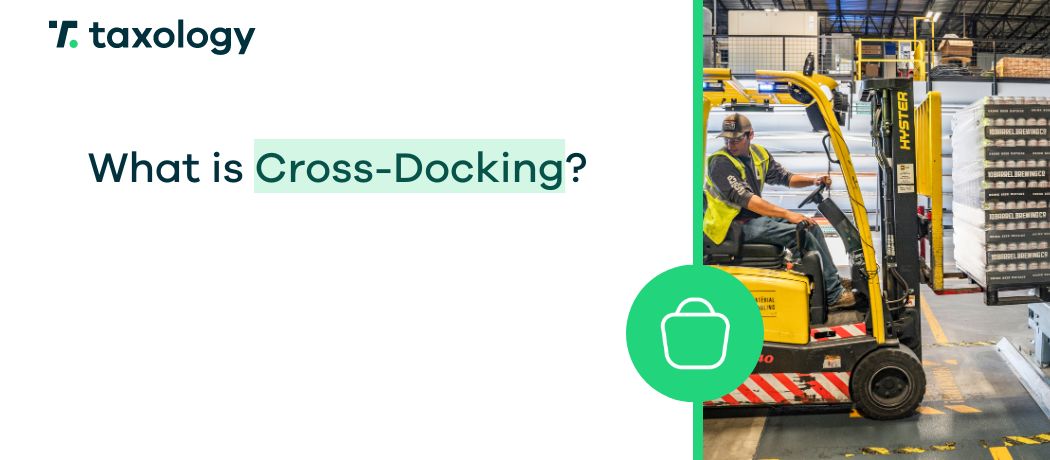France is one of the largest and wealthiest countries in Europe, making it an extremely attractive market for expansion for many entrepreneurs in the e-commerce sector. However, like any other […]
Read in: 5 minWhat is Cross-Docking?
- Last update: 11.04.2024
- Published: 12.05.2023
- Read in: 5 min
Optimizing processes is a key element of running a business. It often depends on the industry’s specifics, but in logistics, transport, or e-commerce, it is particularly important because it affects the delivery time of goods to the consumer. Therefore, it is not surprising that more companies want their customers to receive their orders as quickly as possible.
For this purpose, they are implementing increasingly new improvements. One example of such a measure, where the effects are greatest with the smallest number of employees involved in the supply chain, is Cross-Docking, which is gaining increasing popularity. But what exactly is Cross-Docking? We answered this question, among others, in the article below.
From this article, you will learn:
- What Cross Docking is,
- What the types of Cross Docking are,
- What the disadvantages and advantages of Cross Docking are.
What is Cross-Docking about?
Cross-Docking is a method of goods distribution in which the storage stage is omitted in the supply chain, creating a transshipment point in the designated warehouse area. Thus, Cross-Docking is also called assembly transshipment.
In this logistical model, goods are delivered from the supplier to the transshipment area, where the order is then assembled and passed on for transport. The name itself directly refers to this process.
Interestingly, Cross-Docking can be implemented at various stages of the supply chain, i.e., raw materials, semi-finished products, and finished products can be delivered as part of this process.

E-commerce is more than just logistics. It also includes VAT!
If you need help with VAT registrations, VAT OSS or settlements, rely on our VAT Compliance specialists.
Schedule a consultationWhat are the types of Cross-Docking?
Cross-Docking is a solution that can be implemented in different variants, depending on the personnel and equipment of your own warehouse.
1. Cross-Docking of full pallets
Cross Docking of full pallets is a logistical model that assumes the minimal participation of warehouse employees.
It is the simplest form of Cross Docking concerning goods with large dimensions. It involves complete pallets arriving at the warehouse, from where they are then passed on to the carrier responsible for delivering the order to the end recipient.
2. Cross-Docking with goods consolidation
This model is Cross Docking with assembly at the transshipment point. It is sometimes referred to as Cross-Docking of completed orders and is likely the most commonly used among the types mentioned here.
Cross-Docking with goods consolidation involves delivering all parts of the order from several suppliers at the transshipment point, then collecting them into one shipment and sending it to the end customer.
3. Intermediate Cross-Docking
Intermediate Cross-Docking includes logistical processes that take into account not only goods deliveries from various distributors but also goods stored in a warehouse, part of which serves as transshipment points.
Intermediate Cross-Docking involves assembling the order from deliveries and stored products, which are then sent to the end customers. This process means having the appropriate infrastructure and very well-coordinated processes of receptions and releases from the warehouse, as well as involving a larger number of employees of such a facility.
Disadvantages and advantages of Cross-Docking
Cross-Docking may pose a challenge to implement for many online stores or companies, but it can also be a very profitable logistical model. Although initially requiring significant labor and financial inputs, the Cross-Docking system proves profitable in the longer term.
Advantages of Cross-Docking
The advantages of implementing Cross-Docking include:
- Shortening delivery times – in the cross-docking model, the supply chain does not include the storage element, which requires time-consuming work and warehouse employee involvement.
- Reducing the number of participants in the supply chain – the processes in the logistical model such as Cross Docking are carefully planned and synchronized, allowing for efficient delivery processes and involving as few people as possible.
- Optimizing space and lowering costs related to goods storage – as goods are delivered from the supplier to the transshipment point, warehouse space is not required for storing goods, or this aspect is minimized.
- Minimizing the risk of stagnation and excessive stock – in case the demand for stored goods drops, there may be excess stock of that product.
- Minimizing the carbon footprint – the process of delivering goods to the customer is faster and optimized, which results in less environmental pollution associated with combustion transport.
Disadvantages of Cross-Docking
Among the disadvantages of Cross-Docking are:
- Required precise synchronization, planning of goods receipts, and coordination of work of all supply chain participants – this is an essential element that guarantees the smoothness of the process. Disturbance of one of the links in this chain can result in slowing down not only the directly affected one but also subsequent deliveries.
- High entry threshold and costs – the necessity to invest in appropriate IT systems and reorganization of warehouse staff work and warehouse layout.
- Required significant employee involvement – a Cross-Docking warehouse continuously receives and releases shipments, thus employees must maintain the continuity of their work to prevent stagnation. This, in turn, requires skills and team coordination, as well as meticulous management.
Cross-Docking - summary
Cross-Docking is an innovative logistical model that is gaining more and more popularity with the development of e-commerce services. In its framework, packages with goods are first delivered to the warehouse, then order consolidation takes place, which are soon after loaded onto courier company transport vehicles for further distribution.
Cross-Docking allows for a significant optimization of the process of delivering goods to customers, but its implementation can be complicated. It requires financial investments in modern IT systems and their synchronization, as well as the involvement of warehouse managers to maintain the smoothness of receipts and shipments.
Cross-Docking is an excellent solution when handling a large number of orders with constant demand or when products have a short shelf life and need to quickly reach the end consumer. Additionally, this method proves effective during periods of high product demand, such as promotions, sales, or holidays. However, it is essential to meticulously plan and test processes related to maintaining the supply chain’s fluidity before implementing cross-docking into your online store or company.
Another very important element related to e-commerce, especially concerning international sales to other EU countries and the UK, is VAT tax. If you need to register for VAT or VAT OSS and ensure your settlements are correct, schedule a consultation with us and see what our VAT Compliance specialists can do for you.
If you are interested in more topics related to e-commerce and logistics, check out:




